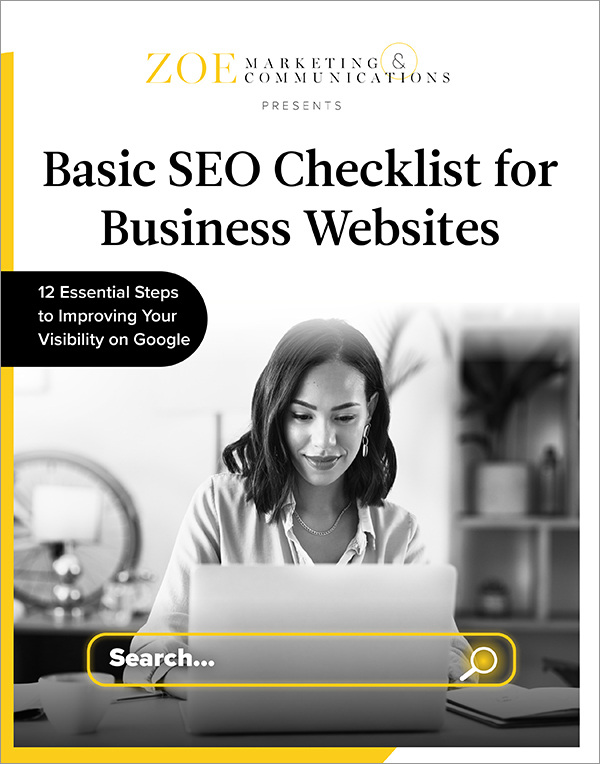
Download Your Basic SEO Checklist
Unlock the fundamentals of search engine optimization. This checklist provides step-by-step guidance to improve your site’s search ranking.
July 9th, 2024 | 2 min. read
By Kim Kovelle

It’s frustrating: You’ve got a solid website with clear ways for people to contact you or buy your services. Maybe you’re even running ads straight to those pages.
And yet your site just isn’t converting leads. What’s going on?
At Zoe Marketing & Communications, 90% of our clients come to us with this issue. Many small- to mid-sized businesses feel like they’re doing the right things but aren’t seeing results. Usually, it comes down to one (or more) of five problems.
Here, we’ll explain the issues — and show you how to fix them.
Unlock the fundamentals of search engine optimization. This checklist provides step-by-step guidance to improve your site’s search ranking.
For most businesses, a healthy website conversion rate falls between 2% and 4%. That means for every 100 visitors, 2-4 take action, like filling out a form or making a purchase.

While rates vary by industry, this is a solid benchmark.
If you’re not meeting that mark — or want to improve it — take an honest look at these common issues.
If your CTAs are vague, hidden or lack urgency, visitors won’t click them, which costs you leads. Generic phrases like “Submit” or “Click Here” don’t tell users what they gain by clicking.

If your website takes longer than 3 seconds to load, visitors may leave. Google also penalizes slow sites in rankings.

More than 60% of web traffic comes from mobile devices. If your site isn’t optimized, visitors may struggle with navigation and leave.

Nearly 95% of people read reviews before making a decision. Without testimonials, reviews or certifications, your site may seem untrustworthy.

If people can’t find information fast, they’ll leave. Cluttered pages, dense text and unclear navigation kill conversions.

A 2%-4% conversion rate is within reach, but it takes effort. Fixing these five issues will not only boost conversions — it will also improve visitors’ impression of your business.
Still struggling? Talk to us. Zoe Marketing & Communications can help refine your website strategy to get better results.
Or, keep learning with these resources:

Unlock the fundamentals of search engine optimization. This checklist provides step-by-step guidance to improve your site’s search ranking.
As Zoe Marketing & Communications’ content manager, Kim Kovelle brings over 20 years of writing and editing experience in metro Detroit. She has strong roots in community journalism and a knack for making complicated topics make more sense.
